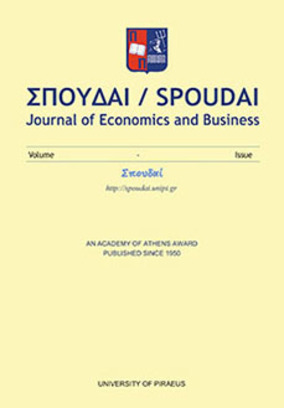Review of tanker safety after the introduction of OPA 90
Part of : Σπουδαί : journal of economics and business ; Vol.63, No.3-4, 2013, pages 37-50
Issue:
Pages:
37-50
Abstract:
The present study focuses on a comprehensive analysis of recorded accidents of medium and large oil tankers (deadweight over 20,000 tonnes), which occurred after the introduction of OPA 90 and until today. Raw casualty data was reviewed and re-analysed in order to produce appropriate statistics useful for the implementation of risk-based assessment methodologies. The main outcome of the presented study is the identification of significant historical trends and of quantitative characteristics of individual categories of tanker accidents, like overall accidental frequencies per ship year, frequencies of each major accident category and per tanker ship size, ship type/design and age, the degree of accidents’ severity and the oil spill tonne rates per ship year. Therefore this study is a valuable source of information for the assessment of the effectiveness of current IMO regulations, classification society rules and tanker industry’s practice.
Subject (LC):
Keywords:
tanker casualties, marine oil pollution, risk analysis and assessment, tanker hull design
Notes:
Περιέχει διαγράμματα, πίνακες, γλωσσάρι και βιβλιογραφία, Special Issue: Management of maritime safety, security and environmental protection
References (1):
- CONTIOPT, 2013. Formal Safety Assessment and Multi-objective Optimization of Container -ships, NTUA-GL bilateral project, 2011-2013.Delautre, S., Eliopoulou, E. and Mikelis, N., 2005. The Influence of Regulations on the Safety Recordof the Aframax Tankers, Study carried out within the POP&C project, www.pop-c.org.Denmark-IMO, 2008. FSA – Crude Oil Tankers. MEPC 58/17/2 and MEPC 58/INF.2.Diamantis, P., 2010. “Casualty analysis of medium size tankers”, Diploma Thesis, Ship Design Laboratory,National Technical University of Athens (in greek).Eliopoulou, E. and Papanikolaou, A., 2007. Casualty analysis of large tankers. J. Marine Scienceand Technology, Vol. 12, No 4, pp. 191-271, November, Springer Japan.Hamann, R. and Loer, K., 2010. Risk-based optimisation of crude oil tanker cargo holds. SNAMEConf. Ship Operations, Maintenance & Economics (SOME), 7-8 October, Athens.Hamann, R., Eliopoulou, E., Konovessis, D., Thomas, M. and Jasionowski, A., 2011. Standard riskmodels for collision and grounding events of passenger vessels, Deliverable 5.1 (2011), GOALDamage Stability, DG Research – FP7 2nd call, 2010.IACS, 2010. General Cargo Ship Safety, FSA study – Step 2 (Risk analysis). Submitted by IACS,IMO MSC 87/INF.4, 21 January.MEPC.122 (56), 2004. Explanatory Notes on matters related to the accidental oil outflow performanceunder regulation 23, Revised MARPOL ANNEX I. International Maritime Organisation, London.Papanikolaou, A. and Eliopoulou, E., 2008. Impact of ship age on tanker accidents. Greek Sectionof Society of Naval Architects and Marine Engineers, September, Athens.Papanikolaou, A., Eliopoulou, E., Alissafaki, A., Mikelis, N., Aksu, S. and Delautre, S., 2007. Casualtyanalysis of Aframax tankers. Proc. IMechE, Part M, J. Engineering for the Maritime Environment,vol. 221 (issue M2), pp. 47-65.POP&C, 2007. Pollution Prevention and Control. EU project, 6th Framework Programme, ContractNo TST3-CT-2004-506193 (2004-2007).Resolution MEPC.117 (52), 2004. Revised Annex I of MARPOL 73/78.SAFEDOR, 2009. Design, Operation and Regulation for Safety. EU project, FP6-516278 (2005-2009).TANKOPT, 2011. Formal Safety Assessment and Multi-objective Optimization of Tanker ships,NTUA-GL bilateral project (2009-2011).




